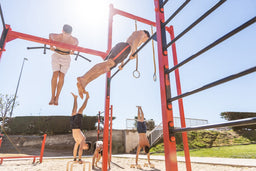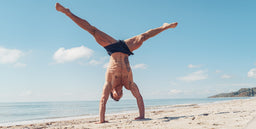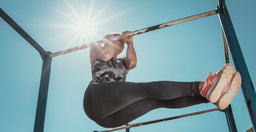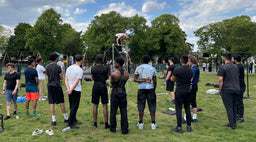
Safety 101 for cold water swimming
Safety 101 for cold water swimming
How to be safe open water swimming so you get the most out of your chilly new hobby.
Cold water swimming is having a moment, and we’re here for it – but we also want everyone to stay safe. Thanks to the inspiring adventures of Ross Edgley, the growing popularity of Wim Hof, and a mounting body of scientific evidence about cold water therapy, there’s never been more interest in outdoor swimming.
There’s a lot to think about when you go cold water swimming. Water temperature, air temperature, tides and currents, underwater hazards and other water users are just the start.
Don’t swim alone
The first and most obvious safety rule for cold water swimming has to be never swim alone. Yes, we know, organising a swim buddy is just one more thing to do when all you want to do is get out there. But it should be a non-negotiable for your safety. Even the most familiar body of water can change with weather, tides, currents, temperature and time of year.
Wetsuit or not?
Some open water swimmers insist on swimming without a wetsuit all year round, because they want to feel the water on their skin. Others will always wear a wetsuit so they can train properly. The choice is yours, just be aware of the pros and cons. A wetsuit will give you buoyancy and some protection from the cold (but don’t rely on it – you’re still at risk of hypothermia). No wetsuit makes it quicker to get into warm clothes afterwards.
Tides, temperatures and more
Learn as much as you can about the things that can change lakes, rivers, ponds, pools and the sea. Never underestimate nature. Use resources like the RNLI, Coastguard, lifeguard and open water swimming groups to understand how tides, currents, rip tides, high and low water, wave height, swell, and temperatures change.
Understand water conditions
If you swim in the sea, make it your mission to understand tides and currents. If you’re going to be swimming in fresh water, learn what you can about temperature, water depth, and underwater hazards. No two bodies of water are the same, and there’s a big difference between a lake, a tidal river, and the sea.
Common sense swimming rules
Check the weather before you go. Take plenty of warm clothing for afterwards. Pack a hot thermos. Always tell someone where you’re going. Pay attention to lifeguard flags, buoys and other markers. Swim parallel to the shore rather than out and back.
Avoid hypothermia
Cold water swimming is, well, cold. And hypothermia is a real thing, even in water that doesn’t seem especially cold. Learn to recognise the signs of hypothermia in others, and be realistic about your limits (it’s difficult to spot it in yourself). Know that wind and air temperature can have as much of an impact as water temperature.
And be serious about getting warm as soon as possible after your swim – the chill can catch you off-guard after a few minutes once the blood starts circulating normally again. Put a warm hat, socks and gloves on first then quickly get dressed with layers and get out of the wind.
Be visible in the water
Never swim without a brightly coloured swim cap and safety buoy. A swimmer is very small and almost completely submerged, so don’t expect other water users like boats, light craft, and jet skis to be able to see you. If you swim early in the morning, consider tucking a light stick under your goggles strap.
Know what to do in an emergency
We hope nothing will ever happen, but do you know who to contact if it does? Call the Coastguard on 999 (yes, they’re an emergency service).
Prepare for post-swim
Phew, you’re out! Don’t let that exhilarating post-swim feeling stop you from getting warm, dry, and out of the elements. Swim hat off, woolly hat on. Now put warm socks on. Then you can take off your swim suit and get dressed.
Prioritise layers rather than one thick outfit – that way you’ll get warm even if it takes a while to get dressed with chilly fingers. Start sipping on the warm drink you prepped in your thermos, and start walking around to get your core temperature up.
We want everyone to enjoy their choice of fitness lifestyle. That’s why the Gravity Fitness store has everything you need to do calisthenics and functional fitness training and home or in the gym. Check out our range of innovative and traditional fitness equipment here.









































